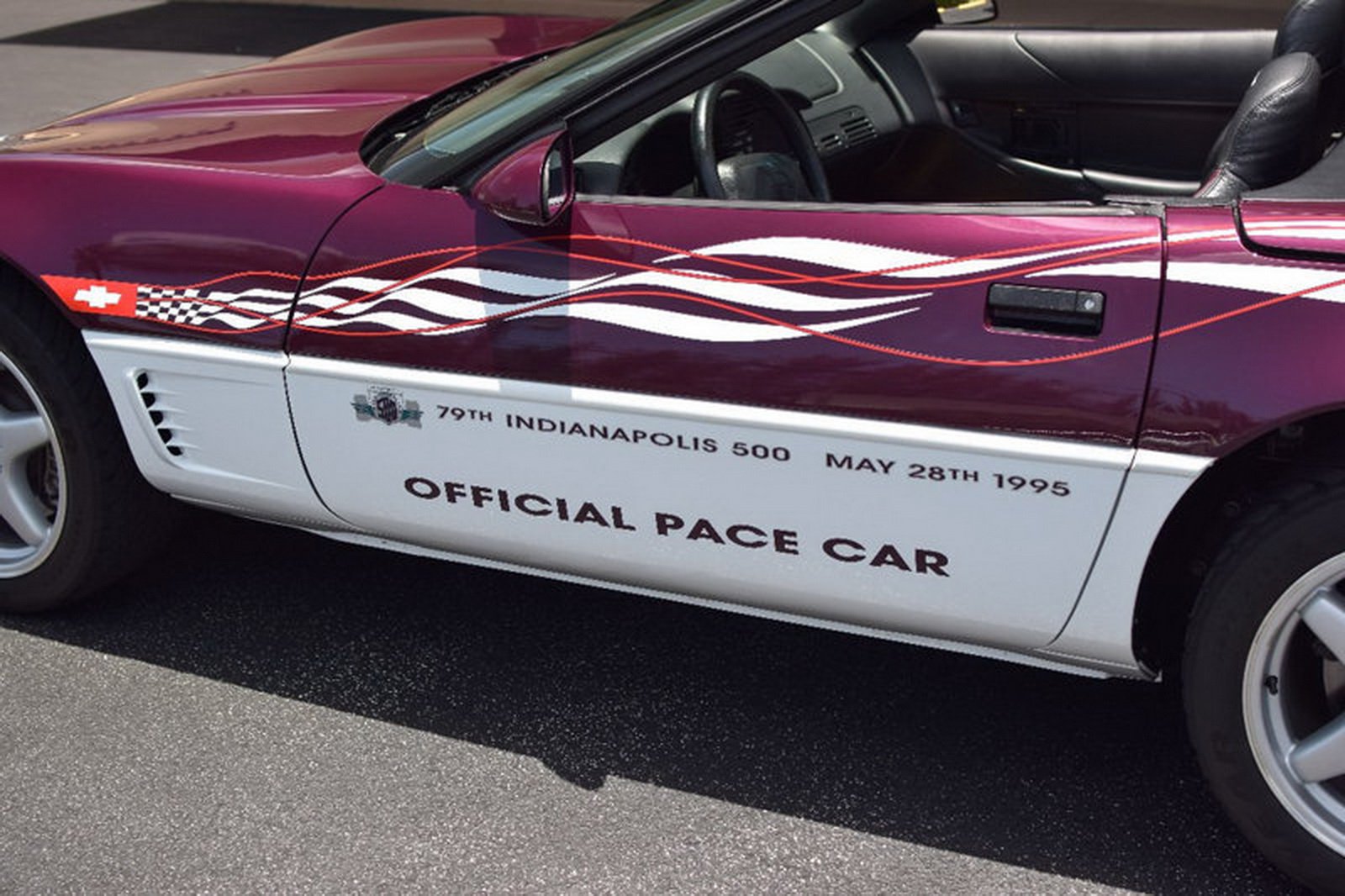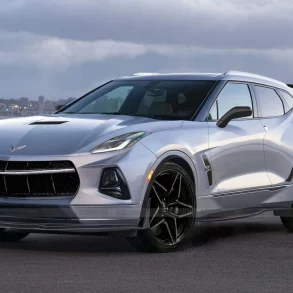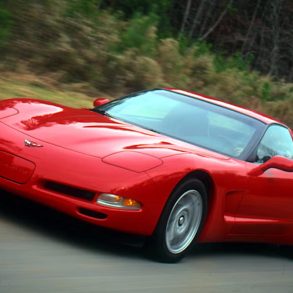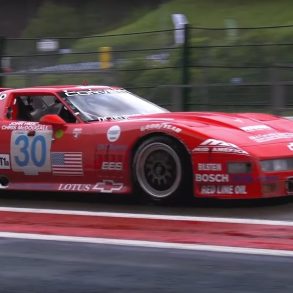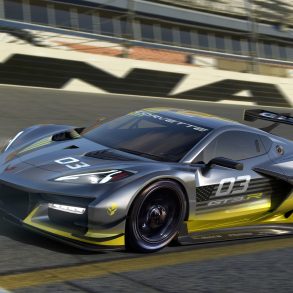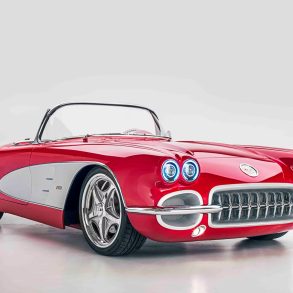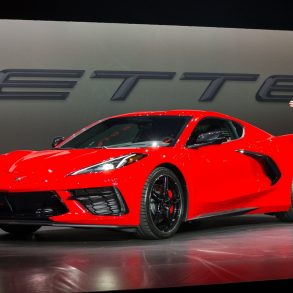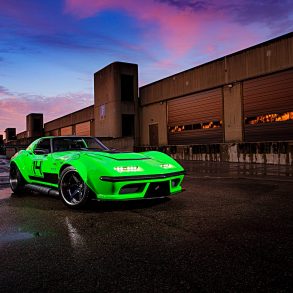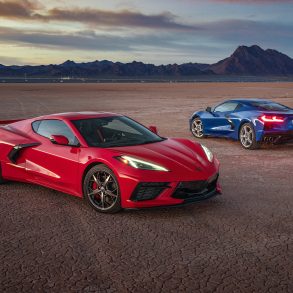Special Editions: The 1995 Corvette Indianapolis 500 Pace Car Replica
The Chevy Corvette first served as an official pace car of the Indianapolis 500 in 1978. The car – a black and silver 1978 Corvette with special badging – captured the imaginations of consumers around the globe and became one of the most popular late-model variants of the Corvette. It was offered as a limited edition replica of the actual pace car and sold out quickly.
In 1986, with the return of the Corvette Convertible (which had been previously discontinued after the 1975 model year), Corvette once more led the pace laps at the Indianapolis 500. This time, a yellow 1986 convertible did the honors. Unlike the 1978 model however, Chevrolet did not offer a pace car replica variant for the 1986 model year. Instead, all 1986 Corvette convertibles (regardless of color) came with an “official pace car” decal package that could be installed by the owner at their discretion.
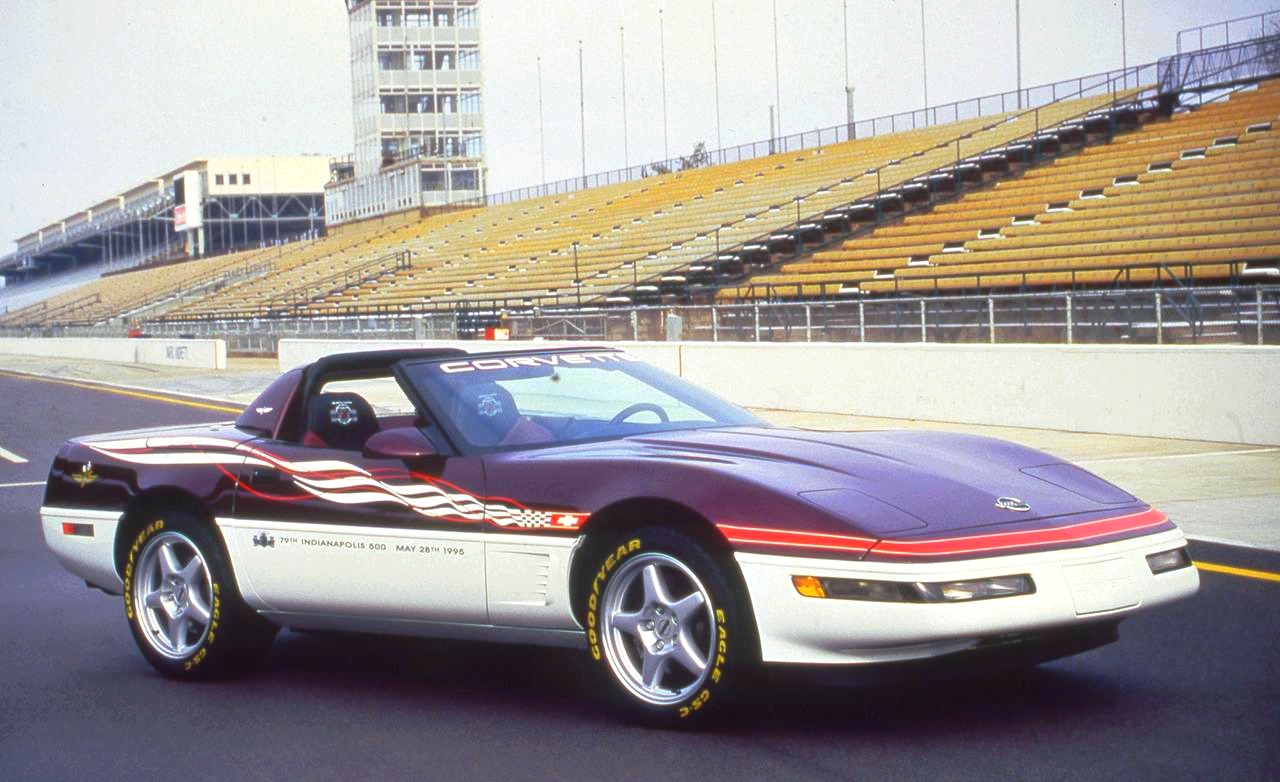
As Chevrolet continued to refine the fourth-generation Corvette, and as the model continued to evolve into a higher-performance variant of its former self, it was decided that the Corvette would once again lead the 1995 Indianapolis 500 race field. It marked the third time that the marque was selected to serve as the official pace car of the event. It also marked the second time that Chevrolet would offer a limited-edition 1995 Corvette Pace Car replica to consumers the world over.
The actual Corvette Pace Car that served at the 79th running of the Indianapolis 500 was a near-stock LT1 Corvette Convertible, except for the mandatory safety features that were required by the Indianapolis Motor Speedway. The Official Pace Car cam equipped with strobe lights, a special roll-bar, five-point safety harnesses for the driver and passenger and an on-board fire suppression system. Chevrolet built just three of the actual pace cars. Two came equipped with an automatic transmission and the third came equipped with a six-speed manual gearbox.
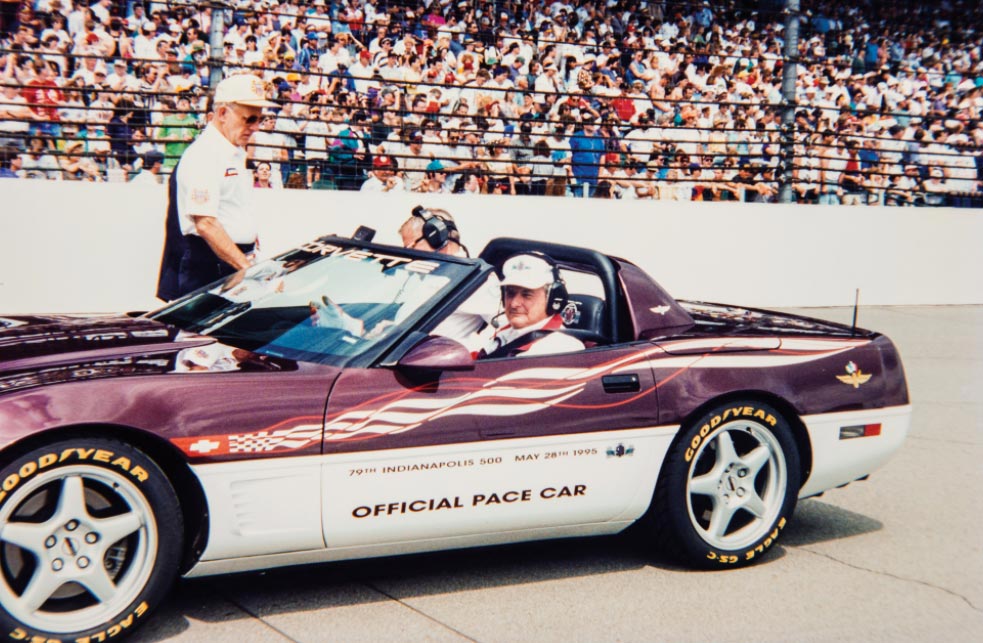
On the day of the race, Jim Perkins, then Chevrolet General Manager, was designated as the official driver of the pace car. He opted to drive the pace car equipped with the manual transmission throughout the race day activities.
To commemorate Corvette’s involvement in the historic race, it was decided by GM‘s brass that another special-edition Corvette should be made available for the 1995 model year. The Corvette – a specially optioned Pace Car Replica – would be offered to consumers in limited quantities. The 1995 Corvette Pace Car Replica could be ordered using regular production option (RPO) Z4Z. It was offered to consumers at an added cost of $2,816 over the base price on a 1995 Convertible (which was $43,665.00 when new.)
The 1995 Corvette Pace Car Replica (like the actual pace car itself) featured a two tone paint scheme – Dark Purple Metallic layered over Arctic White paint. On the front of the car, a broad red stripe decal was installed that ran across the nose of the car before transitioning into a pair of stylized flags that extended down the sides of the car. The car also received an all-white convertible top along with special Indianapolis 500 decals that were installed along the doors. All of the units manufactured with this paint scheme were convertibles.
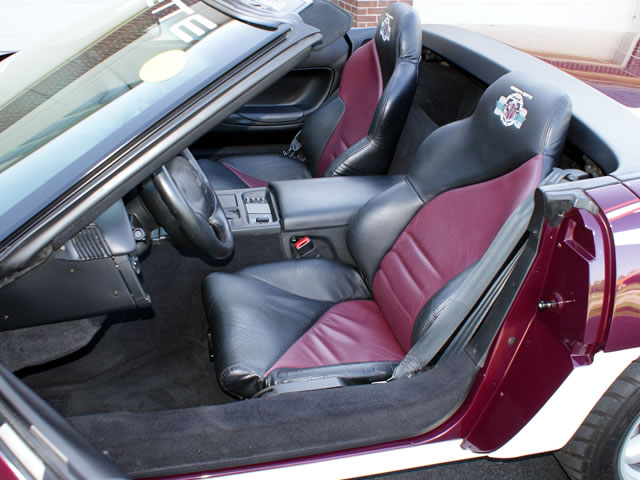
The car’s interior remained largely the same as the base-model coupe and convertibles with two significant differences. The first is that the cars headrests on both the driver’s and passenger’s seat featured the race’s emblem embroidered into the leather. The second is that the seats themselves featured two-tone (black and purple) leather panels. Although far more subdued than many of the later pace cars that GM would produce for this race, the seats provided a unique and striking contrast to the base model versions that were all finished in a single color.
The 1995 Corvette Pace Car was equipped with silver, five-spoke wheels and “A-mold” tires. The tires were the same as those first introduced on the 1990 ZR-1 Corvette. The Pace Car wheels were also based on the earlier ZR-1 five-spoke wheels, giving the car a more aggressive-yet-refined look and feel than that of the base coupe and convertible models. As part of the upgrade package, the car also received electronic air conditioning and a Delco/Bose audio system.
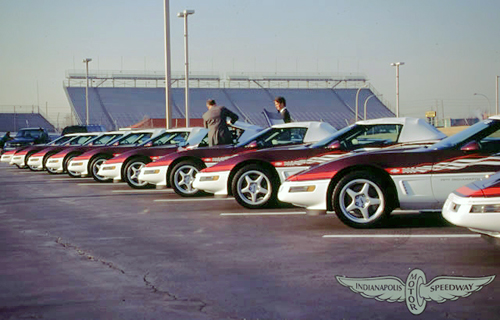
Although these cars were intended for public consumption, GM decided that they would limit production of the 1995 Corvette Pace Car to just 527 Replicas. Of these, 87 were shipped off to the Indy 500 and 20 more of them were slated to be shipped overseas. It was decided that the remaining 415 Pace Car Corvettes would be shipped across the country to the top Corvette retailers. Each dealership/retailer would receive a single example of the 1995 Corvette Pace Car. This marketing ploy was designed to encourage consumers to come into the dealerships and maybe even purchase a Corvette of their own.
But how well have these cars retained their value since being purchased new in the summer of 1995? The answer might surprise you!
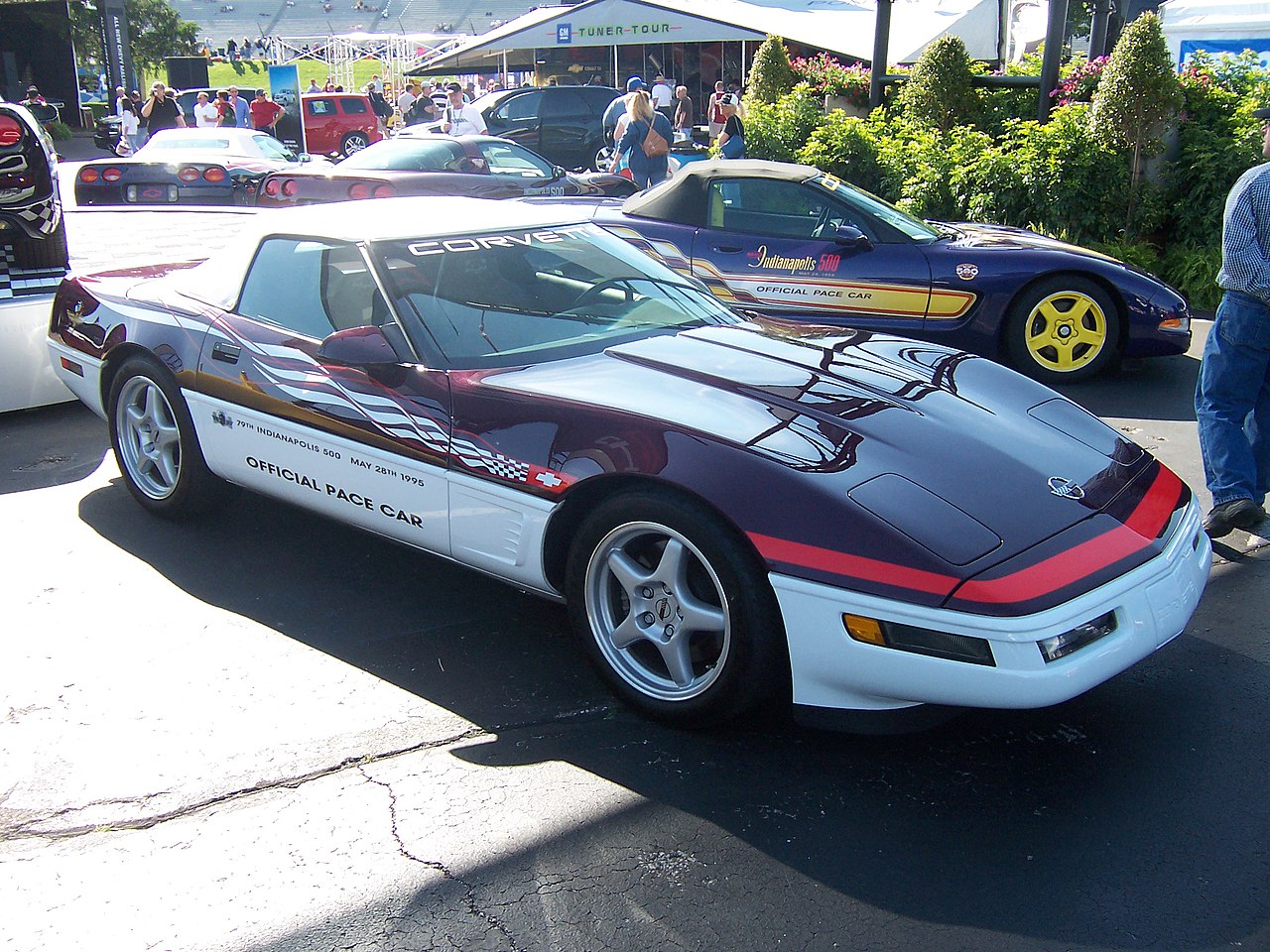
In 2016, Hagerty published a price guide that compared the pricng of the base-model 1995 Corvette coupe and convertible with the asking price of the 1995 Pace Car. The results? Per the Hagerty Price Guide, consumers looking for a low-mileage base-model Corvette convertible with similar miles/condition may still pay as much as $19,000! With regards to the pace cars, the cost delta could be as much as $5,000 over the base car’s asking price, depending on the condition of the pace car replica itself.
Per Hagerty’s website, a 1995 Corvette Pace Car in fair condition would sell for approximately $11,000.00. A car in good condition was priced at $15,500.00. In excellent condition, the car could command $25,500 and in concourse condition (essentially like brand new), the car was appraised at $35,200.00, just roughly $8k less than when it was new.


